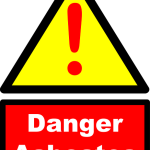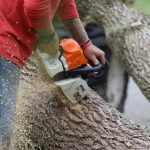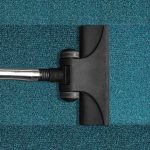Choosing durable bog mats means balancing strength, environmental care, and cost-efficiency. Understanding different materials and their load capacities helps secure safer, less disruptive site operations. Whether tackling soft ground or sensitive ecosystems, selecting the right bog mat ensures long-term stability and project success with minimal impact. This guide highlights key features and options to help you make an informed decision today.
Essential Information about Bog Mats for Construction and Ground Protection
Bog mats are indispensable for establishing stable, temporary ground surfaces across various project sites. These mats serve as a reliable foundation for heavy machinery, helping to protect delicate terrains and maintain site safety. Specifically, they prevent soil erosion, minimize ground disturbance, and facilitate smooth access on soft or uneven ground. Their utility spans multiple industries, including construction, environmental conservation, and disaster recovery plans.
In parallel : Mastering control4 installation for a customized smart home
Selecting the right material for bog mats depends on your project’s specific needs. Timber options, such as hardwood and tropical hardwood, are favored for their high load-bearing capacity and durability, especially in challenging weather conditions. Composite and eco-friendly materials are increasingly popular for projects emphasizing sustainability without compromising strength. The choice of material impacts the lifespan and environmental footprint of the mats, making it essential to assess project demands carefully.
Typical use cases for bog mats include providing construction site access over mud or wetlands, protecting sensitive ecosystems during infrastructure development, and creating stabilizing platforms during emergency response efforts. Their multifunctionality and adaptability make them a vital component of ground management, especially when heavy machinery must traverse soft or fragile landscapes.
Additional reading : Unlock your health: discover chiropractic care benefits
Employers and site managers frequently opt for reputable suppliers like Birketts, GJ Mats Ltd, and HERMEQ, who offer a wide selection of timber, plastic, and eco-friendly mats. These companies provide options for both purchase and rental, with next-day delivery services across the UK. Choosing high-quality, durable bog mats ensures long-term performance and safety, especially in environments subjected to heavy loads and frequent use. When considering Buy Bog Mats, it is advisable to examine specifications such as load capacity, size, and material to match your specific project needs.
In conclusion, the selection of appropriate bog mats — whether timber, plastic, rubber, or eco-friendly variants — greatly influences project efficiency and environmental impact. With tailored solutions available from leading suppliers, it is easier than ever to secure reliable ground protection.
Types and Materials of Bog Mats and Their Architectural and Environmental Benefits
Timber Bog Mats: Features, Advantages, and Common Applications
Timber bog mats, especially those crafted from high-strength hardwoods like Ekki and European oak, are engineered to meet the demands of heavy equipment access mats and construction site stabilization mats. Ekki timber bog mats stand out in the UK, offering superior weather resistance, load capacity, and durability—making them ideal for site mud prevention, civil engineering, energy, and infrastructure projects. These timber bog mats provide natural load distribution, reducing soil compaction and safeguarding the environment through sustainable forestry sourcing, as reflected in solutions like eco-friendly site mats.
The hardwood construction ensures that timber access mats can bear extreme weights, making them reliable for crane support platforms, temporary roadways for construction, and reusable ground stabilization in wet or soft terrain. Their robustness meets tough regulatory and industry requirements, further supporting site safety ground protection and heavy machinery maneuverability.
Commonly, these timber bog mats find use in civil projects, power generation sites, and plant access, offering both purchase and bog mat rental services to suit diverse project durations. The combination of long-term lifespan and natural materials positions timber bog mats as a crucial choice when evaluating tips for buying heavy duty mats.
Plastic and Composite Ground Mats: Alternative Solutions for Wet or Sensitive Conditions
Plastic ground mats, often lightweight and weather-resistant, present a versatile alternative to timber bog mats for temporary ground protection solutions and all-terrain recovery mats. These mats excel in scenarios requiring rapid deployment, ease of transport, and installation—essential for jobs in wetlands, event sites, or as temporary platform creation mats. Plastic bog mats can be reused multiple times, supporting both heavy machinery and pedestrian movement while safeguarding sensitive natural areas.
A distinct benefit is the recyclable composition of many plastic ground mats, aligning with the need for eco-friendly site mats. In comparison to timber bog mats, plastic mats are suitable for equipment track protection on remote or waterlogged sites and for building temporary access solutions for roads where frequent relocation is needed. The design flexibility of these mats allows for customization to non-standard shapes and sizes, supporting emergency access road mats and non-slip ground mats across various industries.
Plastic bog mats options are prominent in the used ground mats market and can be acquired through both purchase and bog mat rental services, offering businesses adaptable solutions for site traffic and logistics challenges.
Environmentally Sustainable Mats: Green Construction Practices
Increasingly, environmental impact of ground mats is under scrutiny, leading to innovative development of biodegradable, compostable, or recycled-content mats as part of sustainable construction site mats. These eco-friendly site mats are evaluated based on global certification standards such as FSC and PEFC—ensuring reduced ecological footprint for large-scale projects. By integrating sustainable bog mats, companies can support minimized soil disturbance, preventing soil compaction, and demonstrating compliance with environmental regulations.
Such mats are especially valuable for forestry work mats, agriculture field mats, and infrastructure projects requiring responsible habitat management. Beyond timber bog mats and plastic ground mats, these innovations address both functionality—site damage prevention strategies and site safety ground protection—and reputational demands for green credentials.
Incorporating environmentally sustainable mats into ground protection strategies not only supports compliance but also positions operators at the forefront of sustainable construction best practices. This trend is reinforced by supplier initiatives such as bog mat recycling programs, compostable ground mats, and the adoption of reusable ground stabilization approaches for long-term positive environmental outcomes.
Installation, Specifications, and Cost Considerations for Bog Mats
Standard Dimensions, Load Ratings, and Specification Standards
Bog mat dimensions are determined by their application and the nature of the ground, as well as the type of equipment that will cross them. Most timber access mats in the UK commonly measure 3m to 5m in length, typically 1m in width, and thickness ranges from 70mm for light-duty work to 300mm for projects requiring the highest load rating. The overall weight depends on size and material—heavy equipment access mats for major crane support may weigh up to 1,000 kg or more per mat.
Load ratings for bog mats are essential, ensuring construction site stabilization mats can safely support large vehicles or cranes. Mats made from dense tropical hardwoods like Ekki and European oak are selected for their high load-bearing capacities, making them a preferred choice for crane support platforms and heavy machinery safety mats. Most industrial ground protection mats comply with industry safety standards, including UK safety guidelines for worksite equipment, ensuring they remain a reliable solution across sectors.
Installation Techniques and Best Practices
For optimal performance, bog mat installation tips emphasize even, firm placement on prepared ground to maximize stability and reduce site disturbance. Temporary ground protection solutions benefit from a systematic layout, often with overlapping joints, which provide extra strength and improve heavy machinery maneuverability. Efficient installation practices reduce time and minimize mud disruption, which is key for site mud prevention mats during wet conditions.
Securing methods, such as interlocking pins or attached lifting eyes, offer increased safety for timber access mats. Regular inspection and maintenance are necessary: debris and mud should be cleared between uses, and any damage should be addressed promptly to extend the life of reusable ground stabilization solutions. Mat durability testing is recommended after intensive operations—especially after supporting cranes or tracked machinery.
Cost Analysis: Renting, Buying, and Long-term Investment
The cost analysis of bog mats covers various options. Pricing guide for rental mats shows single mat hire typically starts from modest daily rates, scaling with dimensions, ground type, and load bearing needs. For long-term or repeat usage, bulk purchase can present lower total expenditure, especially for all-season bog mats required on infrastructure or utility sites.
Ownership of timber bog mats is frequently more economical for contractors managing ongoing or repetitive ground protection challenges. Factors affecting pricing are numerous: bog mat dimensions, timber species (with tropical hardwoods commanding higher rates), supplier logistics, and delivery location. Sourcing from commercial bog mat suppliers or established brands can provide access to a wide range of sizes, secondhand bog mat sales for short-term projects, and the option to participate in mat recycling programs after project completion.
For those comparing rental options, regional rental providers UK-wide offer flexible contract terms and next-day bog mats delivery services. Choosing between timber vs plastic mats comparison or used ground mats market alternatives allows site managers to match product to budget and project requirements, all while ensuring compliance with safety standards and environmental considerations.
Industry Applications and Supplier Insights for Bog Mats Usage
Construction, Civil Engineering, and Infrastructure Projects
Precision: Bog mats, especially timber access mats and heavy equipment access mats, are vital for temporary access roads and ground stabilization in construction site solutions. Site safety ground protection starts with robust temporary ground protection solutions that offer both stability and load-bearing capability, ensuring smooth movement for heavy machinery. For civil engineering and large-scale projects, industrial ground protection mats protect delicate terrain while handling repeated use from cranes and excavators, supporting ongoing construction site stabilization.
Elaboration: In practice, contractors use crane support platforms and excavator access solutions to reinforce soft or wet ground, preventing machinery from sinking or becoming immobilized. For instance, timber bog mats benefits include reusability and strength, allowing for rapid deployment and minimal site disruption. These solutions are further supported by regional rental providers UK, who guarantee quick access to site mud prevention mats and temporary access solutions for roads, even in challenging or remote locations. The durability of heavy load bearing mats is essential for supporting cranes and heavy trucks during infrastructure upgrades, where mat durability testing ensures compliance with safety standards and effective performance under adverse weather.
Special Projects: Environmental Conservation, Flood Prevention, and Event Support
Precision: Bog mats play a crucial role in wetlands preservation, flood disaster recovery, and as ground mats for wetland work, combining eco-friendly site mats and reusable ground stabilization for delicate areas. Their use in festival sites and outdoor events is enabled by crane operation safety platforms, which provide robust, non-slip ground mats to protect venues and prevent ground compaction.
Elaboration: Whether it’s for emergency access road mats in rural flood zones or agriculture field mats during harvest, commercial bog mat suppliers offer heavy machinery safety mats designed for all-terrain recovery mats and forestry work mats. Temporary platform creation mats are regularly used during environmental conservation projects and support logistics for event management, providing industrial ground protection while reducing soil erosion. Durable material ground mats offer reliability where traditional paths fail, such as in temporary roadways for construction across marshland or remote music festival grounds. Regional rental providers UK can supply heavy timber mat production and mobile site protection mats even on short notice.
Leading Suppliers and Equipment Providers
Precision: The main commercial bog mat suppliers in the UK—Birketts, GJ Bog Mats Ltd, and HERMEQ—stand out due to robust stock, fast delivery, and focus on sustainable construction site mats. Stock availability, delivery times, and eco-friendly site mats are pivotal in contractor choice.
Elaboration: Birketts supplier review highlights an extensive inventory of timber access mats, supported by efficient bog mats delivery services. GJ Bog Mats overview notes specialization in Ekki timber bog mats, with flexible hire contract terms and vast stock for immediate use. HERMEQ supports heavy equipment transport mats, and is noted for durable European and tropical hardwood mats. These suppliers ensure mat thickness and load rating suit project-specific needs, and help projects adhere to safety standards compliance mats. When considering secondhand bog mat sales or used ground mats market, buyers should assess wear levels and maintenance of ground protection mats for optimal value. For those interested in hire near location services, location-specific mat hire allows for reduced logistics of mat hire costs and quicker project setup. Site safety ground protection and preventing soil compaction mats remain the top priorities, ensuring temporary ground protection solutions meet strict industry benchmarks for both construction and environmentally sensitive projects.
Practical Applications and Advantages of Bog Mats
Bog mats play a central role in providing temporary ground protection solutions across demanding environments. When heavy equipment access mats are deployed, they stabilize construction sites, enabling the safe maneuvering of machinery and minimizing disruption on soft or unstable ground. Precision-engineered heavy equipment access mats ensure the ground remains undamaged, which is vital for both safety and project continuity.
Timber access mats are widely favored for their resilience and adaptability. They allow rapid setup of temporary roadways for construction, particularly on challenging terrains such as wetlands or remote locations. These mats distribute weight effectively, reducing soil compaction and preventing machinery from becoming bogged down.
Within various industries—from civil engineering to utilities and agricultural operations—mobile site protection mats and industrial ground protection mats are relied upon to support a broad array of activities. Applications include:
- Creating stable bases for crane operations
- Providing access for excavators and other heavy vehicles
- Facilitating pipeline construction and forestry work
- Enabling vehicle recovery and emergency access during adverse weather
Reusable ground stabilization is another major advantage of using bog mats. Quality mats withstand repeated use, offering long-term value and reducing the environmental impact compared to single-use alternatives. Many eco-friendly site mats are constructed from sustainably sourced hardwood or recycled materials, helping organizations address sustainability targets while maintaining site performance.
For maximizing site safety, site safety ground protection mats are engineered with non-slip surfaces and robust construction to minimize risks for workers and machinery. Mats such as all-terrain recovery mats, forestry work mats, and agriculture field mats are tailored to specific site conditions, supporting operations year-round.
The market for these essential solutions includes a wide selection, ranging from new and used ground mats to secondhand bog mat sales, catering for different budgets and project durations. Entities seeking bog mat rental services or exploring the used ground mats market can find options tailored to local areas (e.g., “bog mats near me”) or for immediate use with next-day delivery.
In demanding conditions—whether preparing a platform for heavy lifting equipment or mitigating site damage during wet seasons—timber bog mats, heavy machinery safety mats, and temporary access solutions for roads are fundamental components of an effective site management plan. Their strength, versatility, and capacity for reuse make them indispensable in supporting efficiency, safety, and environmental responsibility across the spectrum of construction and industrial activities.











